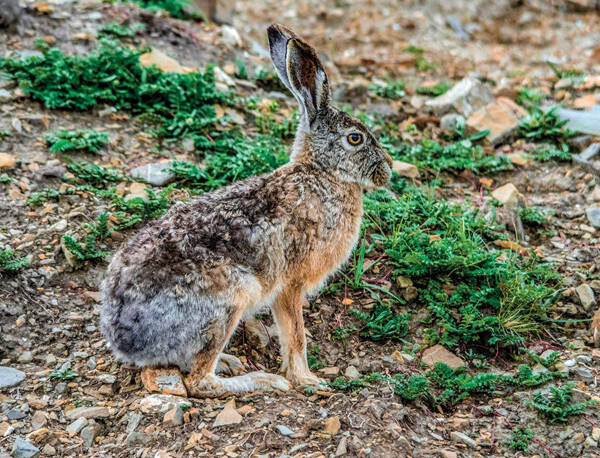Ochotona curzoniae
IUCN
LCBasic Information
Scientific classification
- name:Ochotona curzoniae
- Scientific Name:Ochotona curzoniae,Plateau pika, singing mouse, stone rabbit, Anona
- Outline:Lagoiformes
- Family:Lagomorpha Ochotonidae Ochotona
Vital signs
- length:140-200mm
- Weight:200g
- lifetime:
Feature
There is a noticeable black colour around the lips.
Distribution and Habitat
In China, it is mainly distributed in the Qinghai-Tibet Plateau, including the western Sichuan Plateau, Tibet, Qinghai, Gansu and southern Xinjiang. Abroad, it is distributed in Nepal and northern India on the edge of the Qinghai-Tibet Plateau.
Black-lipped pikas live on sparsely planted cliffs and rock piles and soil slopes near farmlands at an altitude of 3,200-5,200 meters, and live in caves.
Appearance
The individuals are relatively large. The average body length is 170mm. The whole body is lighter in color, light sandy brown. The neck is slightly lighter in color. The most distinctive feature is the prominent black color around the lips. The soles of the feet are hairy, and the claws are hidden in the hair. The hair on the abdomen is grayish white or light sandy yellow. On the skull, there is no oval foramen in the frontal bone, and the incisor foramen and palatine foramen are merged into one large foramen.
Details
The black-lipped pika is also known as the plateau pika, the singing pika, the stone rabbit, and is called "Anona" in Tibetan medicine. It belongs to the subgenus "Ochotona". It is also called the plateau pika, and is a key species in the entire Qinghai-Tibet Plateau meadow ecosystem. When humans destroy grasslands, black-lipped pikas will reproduce in large numbers, with a maximum population of more than 800 per 10,000 square meters. Although they have been killed in large numbers in many places, the population will recover quickly. Studies have shown that plateau pikas play an important role in the restoration of grassland vegetation, and killing them in large numbers is unwise.

The black-lipped pika does not hibernate in its living habits. It stands up to eat. It is most active from 8 to 10 am and 17 to 19 pm every day of the year. Its activity range is generally about 20 meters away from the central cave, and it rests at night. They have a common feature that when they see people, they like to stand upright at the entrance of the cave and keep calling "squeak, squeak, squeak", as if they are communicating with each other, raising their vigilance or strengthening their courage. If you get closer, they will flee into the cave, but will soon stick their heads out of the cave entrance to look around. Pikas are gentle, lively, cute, and smart. They can be trained to perform, which is very pleasing. Pikas reproduce quickly, with a gestation period of 28 days and 4 to 8 pups per litter. Premature pikas can join the breeding group of the year.

This species is listed in the 2013 Red List of Endangered Species of the World Conservation Union (IUCN) ver3.1-Vulnerable (VU).









